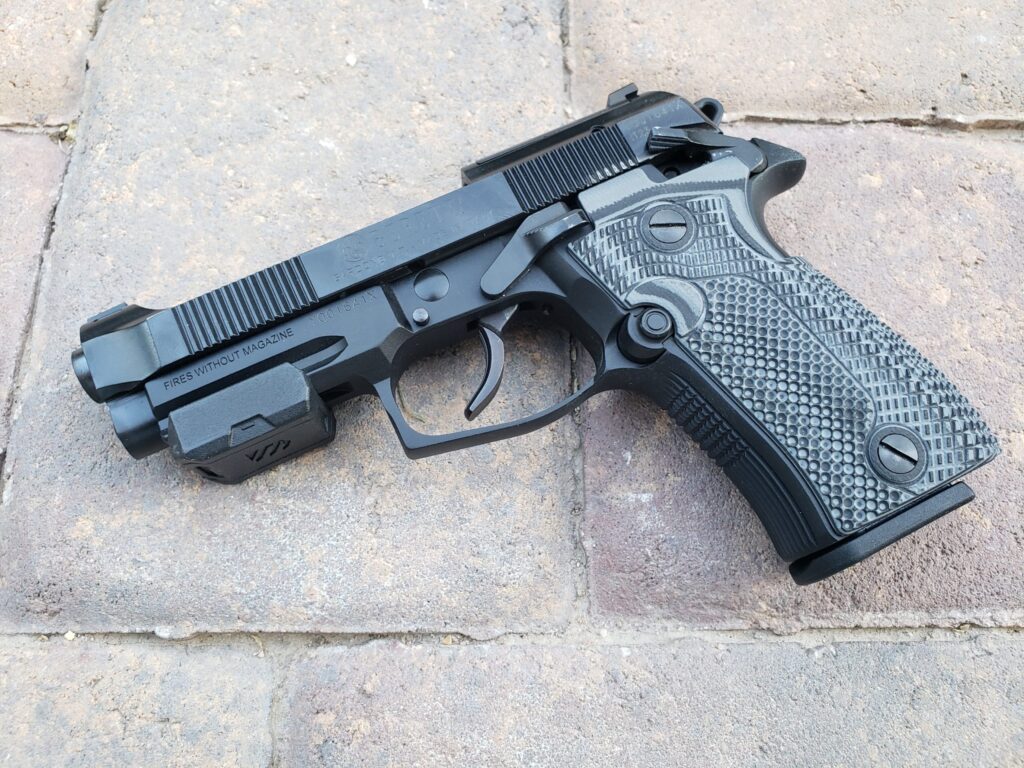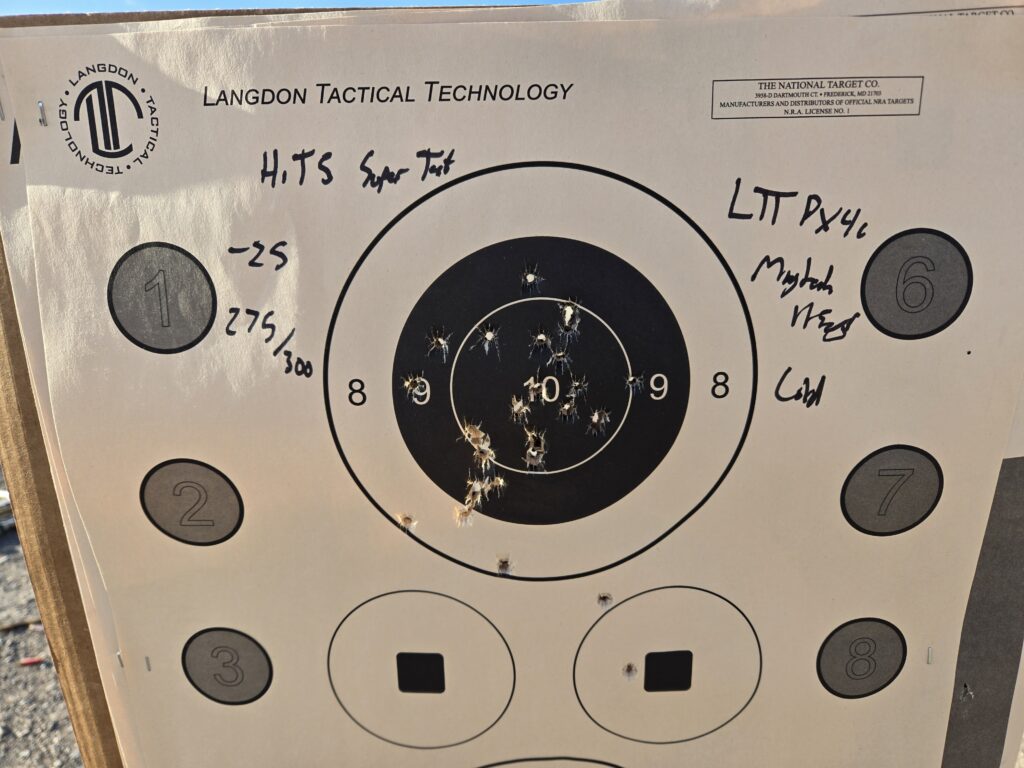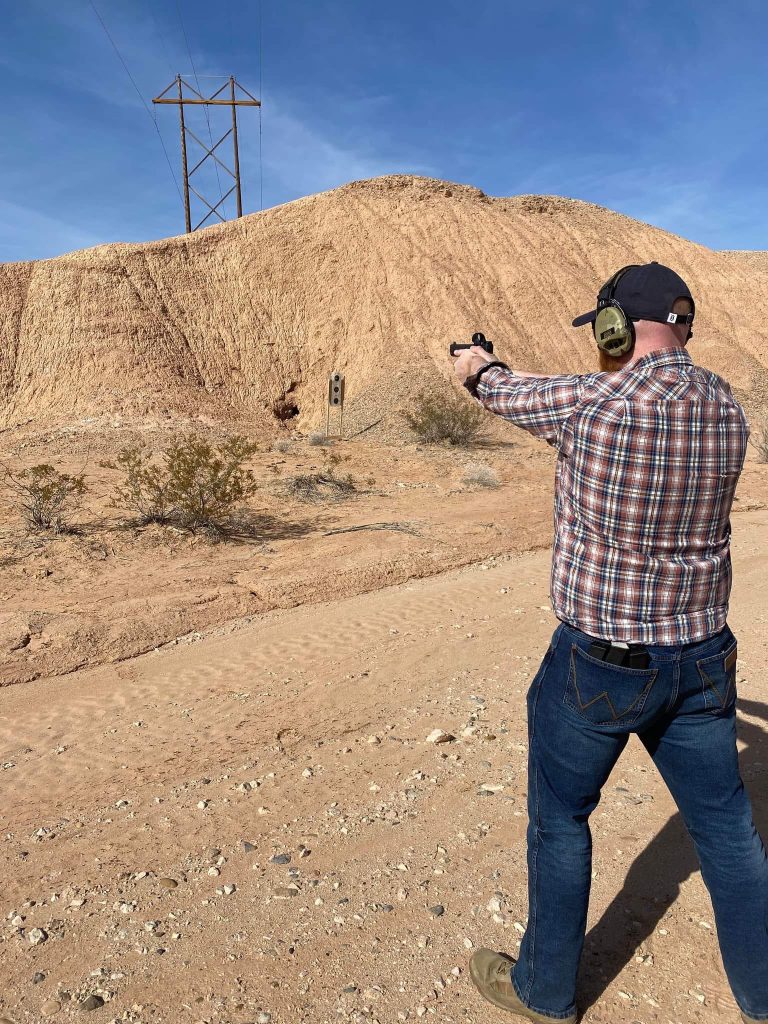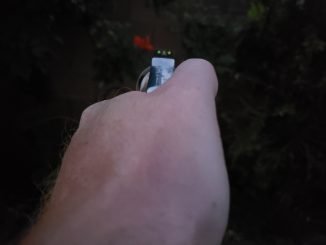
Over the past few weeks a handful of respected trainers, competitors, writers, and personalities have come together with an interesting message. No, we’re not getting into SIG P320 drama here, but you’re close. Strangely, these people have decided to champion the position that striker fired handguns are (generally) unsuitable for concealed carry or duty use. Caveat, one group in particular called out the Heckler & Koch VP9 as an acceptable solution, a gun which is offered for customization and sale by said group.
Instead of striker fired pistols, the double/single action (DA/SA) or traditional double action (TDA) handgun is suggested as the ideal solution for duty and self defense. In short, they claim that a striker fired pistol is inherently unsafe. Some accusatory language includes the terminology of “predictable accidents” and “you are asking for trouble” regarding the AIWB carry of striker guns. While one author has never had a safety issue after a 20 year law enforcement career carrying Glocks, he attributes much of that to “luck”. Some have equated carrying a striker gun to carrying a single-action 1911 with the hammer cocked, manual safety off, and grip safety pinned.
Additionally, several comments have been made regarding how qualified some people are to carry handguns to protect themselves. That no trigger style can truly protect them, and more. These points sound a little familiar don’t they? Some of this language is what we actively fight against from those arguing for empty-chamber carry, decocked SAO guns, and disarmament in general.
DA/SA Superiority because I Say So
Curiously, none of these DA/SA acolytes manage to include any data, sources, or facts in their arguments. They’re strictly operating off of personal preference and hearsay to make sweeping arguments against what is objectively the most popular style of handgun for citizen self defense, law enforcement, and military use across the globe. Certainly these people are highly qualified shooters, some with prolific military, LE, and competitive backgrounds. Yet they fail to have any substance behind their claims.
My Time with DA/SA
I’m no stranger to the world of DA/SA, and in the past I’ve advocated for them over other options. It wasn’t too long ago that a common mantra online was that TDA was a “Thinking trigger, followed by a shooting trigger.” The idea here being that you get a slightly greater margin of error when pressing the trigger (intentionally or otherwise) before breaking a shot. Then, if you do fire the gun, any follow-up shots are easier to make after the single-action conversion. This is opposed to the “Shooting trigger only” of single-action guns, or a striker fired pistol that sits somewhere between. While I don’t agree with these terms today, they at least provide a little more nuance, with less emotional investment, than what we’ve seen recently.

I cut my teeth as a shooter with the Beretta M9 and the CZ P-07. The little Czech wonder-nine is where I grew substantially as a shooter, though it was eventually put out to pasture in favor of Glock. Over the years I considered carrying other DA/SA guns, and owned several others. The S&W 5904 and 4006, Beretta PX4, 21A, and M9A3, the Daewoo DP-51, H&K USP40, Ruger P95 and SR22, EAA Witness, SIG P2022, Walther PP, Makarov, Bersa Thunder, are just a few DA/SA guns that I’ve owned and/or carried over the last decade-plus. This isn’t to mention guns I’ve had time on but never made it to my safe.
Even in the last year I’ve given substantial time to the Beretta PX4 once again, and the 80X Cheetah. While I’m not known for my use of the type, they’re not foreign to me by any mark.
The Worst of Both Worlds?
Despite this experience and prior love for the type, I’ve grown to somewhat dislike the style in recent months. These thoughts began forming prior to the recent internet drama surrounding them, though I doubt these conversations have helped my opinion. As you’re likely aware if you’re a reader here, I don’t carry DA/SA pistols, and haven’t for quite some time. I’m primarily a striker-fired shooter, along with double-action revolvers. Even the 1911 finds itself in my waistband from time to time. In short, I’ve begun to think that DA/SA may offer the worst of both worlds.
Shortcomings of DA/SA Handguns
Increased Training Requirements
A great many DA/SA advocates will tell you that it takes additional training to effectively run a gun of that type. They will typically follow-up saying that this means that DA/SA shooters are often especially competent, as they spend more time on the gun during the training process. I fully agree that DA/SA shooters need more training than SAO or striker users. However, I fully disagree that most DA/SA users are especially competent. Sure, there are some high level shooters who are highly dedicated, but they are outliers, just as they are with any action type.

Over the past year I’ve spent quite a bit of time as a volunteer RSO and instructor for a local training group. This has provided me access to dozens of brand-new and relatively inexperienced shooters per meeting, averaging roughly 40 or more students per night. While I’ve seen a few dozen people show up with DA/SA guns, I’ve seen exactly one (1) shooter who was not only competent with their gun, a S&W Model 39, but also comfortable and familiar with it. The rest of these shooters struggled greatly for one reason or another, and most seem to opt to ditch the gun in favor of something more user-friendly.
Don’t take my word for it. Here’s a quote from law enforcement legend Larry Mudgett about his experience with DA/SA autos in his own classes: “The guns which cause our clients the greatest difficulty are the traditional double action autos such as the M9. The correct procedures for manipulating the double action auto pistols are complicated and time consuming to learn.” [Marksmanship Matters].
Allocation of Resources
For those staying with DA/SA, you need to train. All of these extra functions contribute to your cognitive load, both under stress and otherwise. These can contribute to accidents, so be deliberate when handling your gun. If we want to talk about “predictable accidents”, as some of stated, a lack of proficiency with a DA trigger, and failure to properly manipulate decocking levers are absolutely on the list of root causes.
Now that isn’t necessarily a ding on the guns themselves. People quit good things all the time because they’re difficult. However, most people aren’t training junkies. There’s a lot to learn when it comes to using guns, for defense or otherwise, and dedicating substantial time and money to learning a trigger may not be the best use of limited resources. Don’t forget that we’re also increasing the administrative burden by requiring a decock after shooting as well. Task saturation may start setting in as more processes are put in place to get our gun into and out of action.
Whether you’re a single mother or a large law enforcement agency, you’re likely starting to look sideways at DA/SA right about now. This extra effort could be put towards things like de-escalation training, empty-handed skills, high risk shots, or something completely unrelated like family or fitness.
Increased Trigger Reach on DA/SA Guns
Something I almost never see mentioned when it comes to DA/SA pistols is the trigger reach. A double-action trigger is almost guaranteed to be a longer trigger than SAO or striker fired. In fact, that’s often touted as an advantage, giving shooters more time to think during the press. Unfortunately, this long reach can eliminate many guns from contention for a large portion of the population.

The Beretta 80X Cheetah is a DA/SA handgun chambered in 380ACP. A major selling point of the gun is that its frame is designed around the 380ACP, making it smaller in circumference and overall size compared to most 9×19 options. In my mind, this made it an excellent fit for many women and others who have small hands. Unfortunately, this didn’t quite pan out in reality. Eager to test this theory, I had my wife test the gun, as she’s of average height for a woman in the US. She struggled to get even the pad of her finger on the trigger on the 80X despite the small frame. Excessive trigger reach in DA ruled the gun out for her.
For reference, her typical carry guns are a Glock 48 or a Smith & Wesson 632. Now consider most other DA/SA pistols, with their larger frames. Starting to see the problem?
Perceived Safety Against Negligent Discharges with DA/SA, or Greater Shot Accountability
As briefly mentioned earlier, some people consider the DA/SA handgun to have a greater margin of safety than other mechanisms. The idea here is that a longer and heavier trigger is harder to break than a shorter and lighter trigger. That makes sense, and I don’t disagree with that point. However, I see a lot of DA advocates talking out of both sides of their mouths here. No trigger is truly safe from being accidentally or negligently pulled.
The Weight of it All
Approximately 12 pounds is a common weight for DA triggers, compared to around 5.5 pounds for SA and striker fired guns. The startle reflex of closing your hands for humans comes to approximately 25 pounds. Whether you’re surprised, falling, or experiencing sympathetic squeeze, that DA trigger probably isn’t going to do much to save you here.

What we do see regularly is the heavy trigger weight of double-action causing people to miss their first shot. Unfortunately there are no missed shots, only unintentional hits. If someone cranks off a shot with their DA/SA pistol, where’s that round going if it fails to hit the target? We can mitigate this with training and practice, but that isn’t the reality for many people.
Curiously, most instructors lambast the New York trigger for Glocks, crediting it for many of the NYPD’s marksmanship errors. How heavy is the NY2 trigger? Twelve (12) pounds. Now I know that people will talk about the quality difference between those two triggers, which is a factor, but the matching weight can’t be ignored.
If you’re counting on your trigger to save you, it might be time to re-evaluate things. For me, I’d prefer to have greater accountability of where my shots are going, every time.
DA/SA Conversion
Finally, we must talk about the DA/SA conversion. This is often discussed as it relates to learning two different triggers. On a DA/SA pistol, your first shot is a long, heavy press. Subsequent shots are relatively short and light, typically coming in around 4.5-5.5 pounds, with less travel than a striker fired trigger. As touched on, the perception is a “thinking trigger followed by a shooting trigger.”
That’s great in theory, but lately I’ve come to disagree with that terminology. I prefer consistency in my trigger press, whether that’s SAO, DAO, or striker fired. Each shot is just as important as the first one, if more than one is required. We d0n’t throw the safety baby out with the bathwater when the balloon goes up.
Haters Gonna Hate, and Where to Go From Here
Before we close out this article, I think it’s important for me to make a few clarifying statements. I do not think DA/SA guns are inherently bad, dangerous, unreliable, or otherwise negligent to own, use or carry. I do however think that they can be suboptimal for certain groups of users, which can unnecessarily increase their risk of negative outcomes. While many DA/SA enthusiasts are absolutely better shooters than me, I think sometimes people can become detached from the “average” gun owner, and make recommendations that suit their own preferences, rather than the general user. We also see this with people recommending highly tuned single-action and striker fired pistols. Sometimes your favorite tool isn’t right for the job.

With this in mind, I could provide criticisms of certain SA and striker-fired options. This is not a comparison piece, so we’ll table those discussions for another time. Think of this more like the irons versus optics debate. I have optics on many of my guns, but I don’t think they are mandatory, nor do I think they’re right for everyone. You may be best served by a DA/SA gun, or you may be sub-optimally served by one. I shoot better with optics, but I’m comfortable with irons, much like my Glock versus a Beretta PX4. I want you best informed, and these are my thoughts and opinions to help with that. Maybe one day I’ll return to the DA/SA team, but who knows.
Closing Thoughts
At this point you probably think I’m a DA/SA hater. That’s not quite the truth. I still long for a variety of DA/SA pistols, with several on my list to acquire. I’m not even fully opposed to strapping one in my waistband, though not without some refresher training. What I am a hater of is people making sweeping claims without any data to back themselves up. Ironic, right? All of our options have pros and cons, and it’s up to us to decide what suits us best. For more opinions, check out this excellent conversation on the topic between Karl Rehn and Ernest Langdon.
So what do I think you should do? Make an informed decision, and don’t rely on just one or two people online who feel the same way to make choices for you. Maybe the DA/SA gun isn’t right for you, but you’re worried about carrying a traditional striker fired pistol. You could consider the Striker Control Device for a Glock, which adds an additional layer of safety. Another option is a striker gun with a manual safety, such as the S&W M&P, or Springfield Echelon. Talk to people you trust, get some training, and don’t just rely on Op-Eds and YouTube videos.
Support My Work
If you made it this far, thanks for reading! Writing isn’t my full-time profession, and nearly everything I do comes out of my own pocket. Between ammunition, tuition, range fees and more, expenses add up fast. If you like what I have to offer, consider making a donation to my Patreon.
Every bit helps bring more work like this to you, and contributes to shortened timelines or more in-depth work on my part. You’ll also have more direct access to me, offering suggestions for future projects, looking behind the scenes, and getting early access to some content. You can find my Patreon >>HERE<<





Be the first to comment